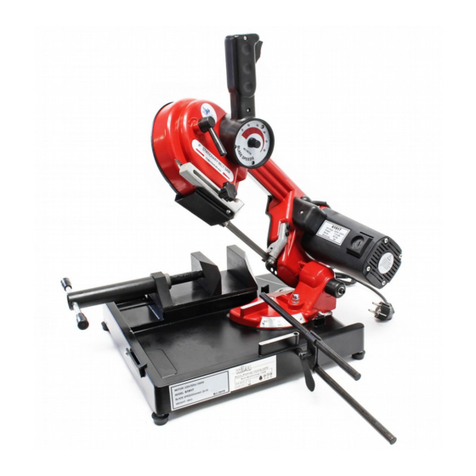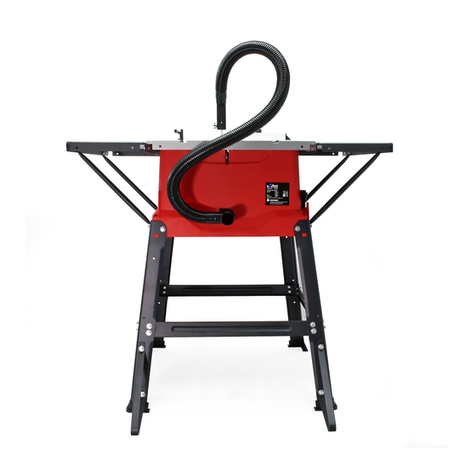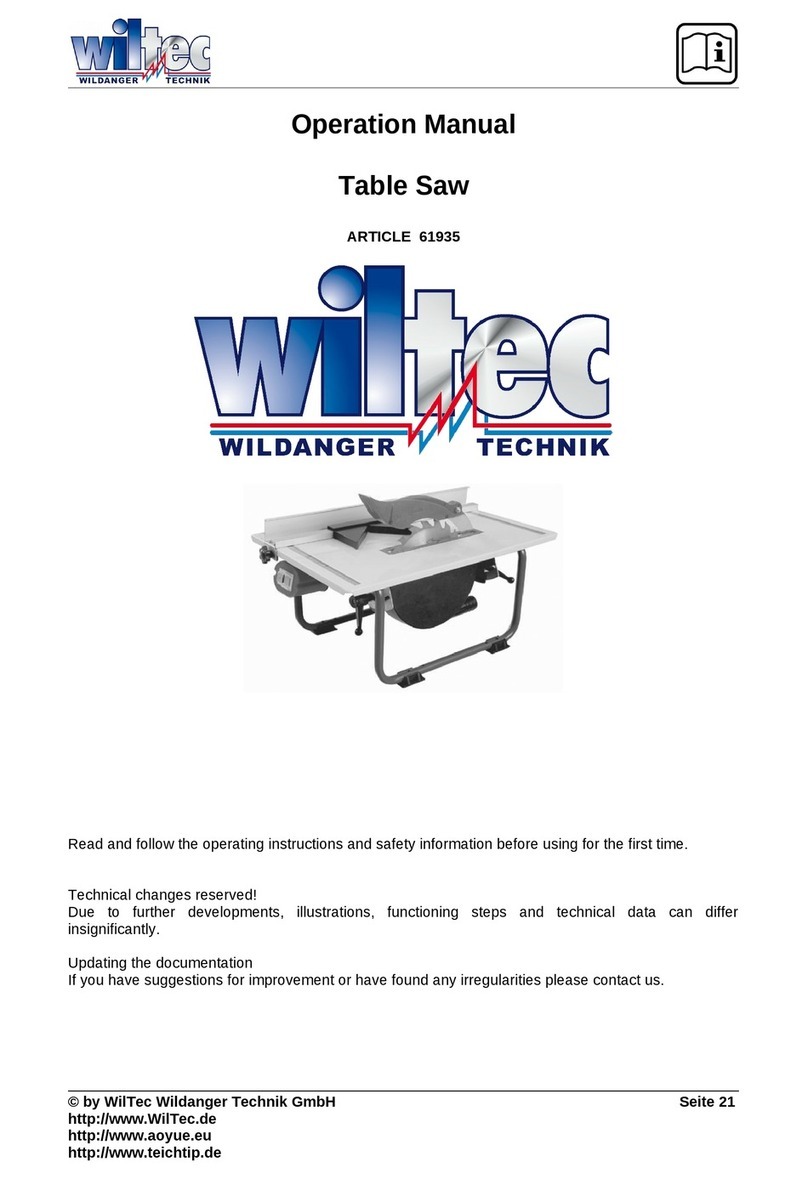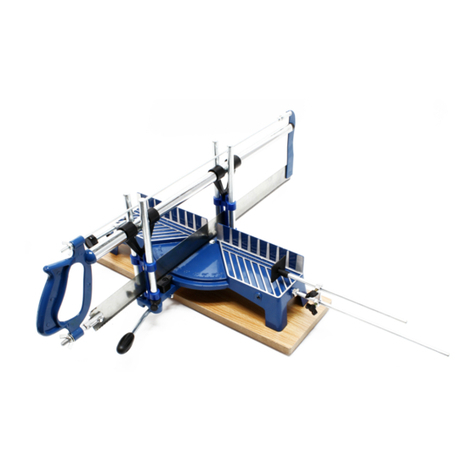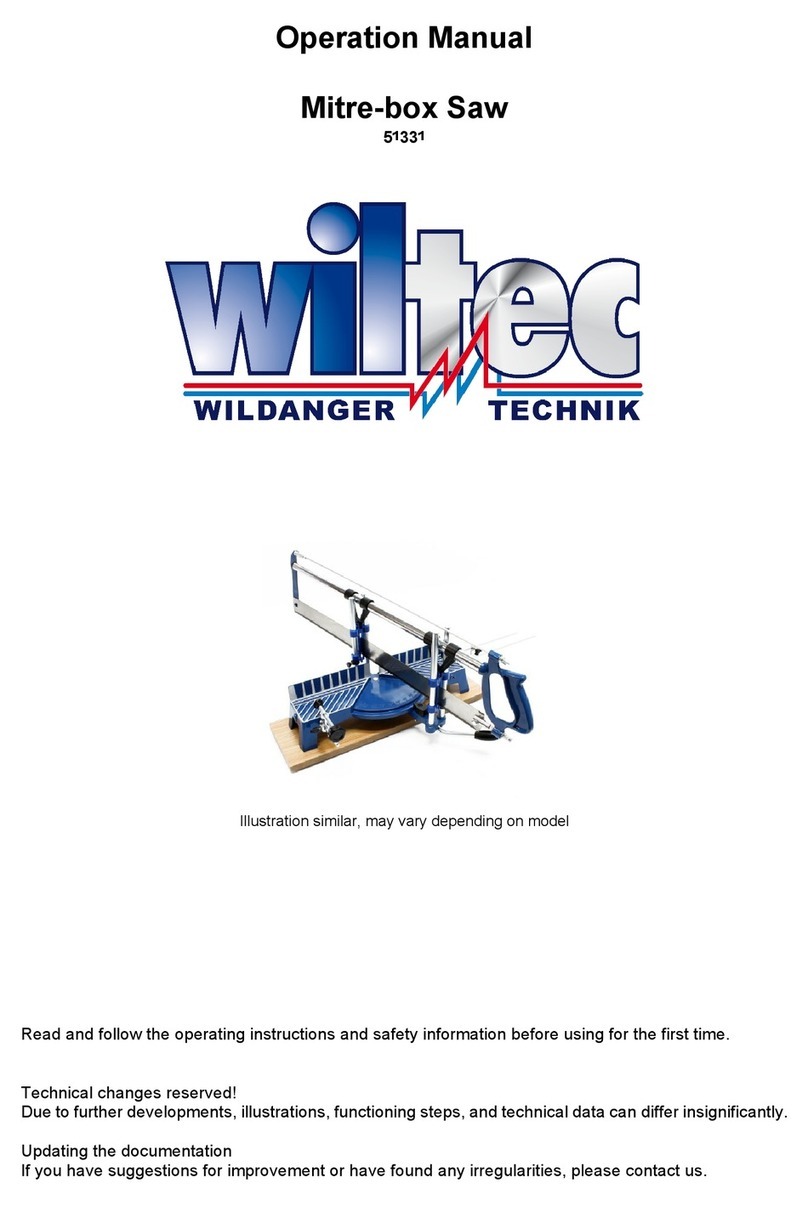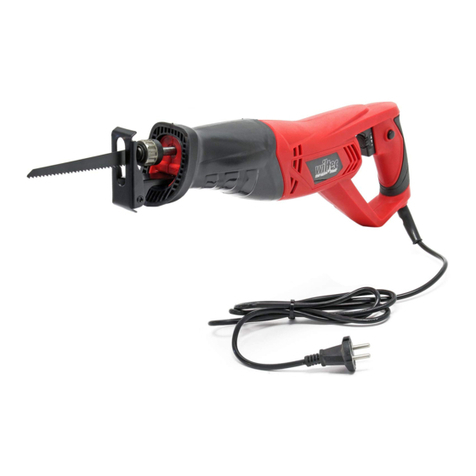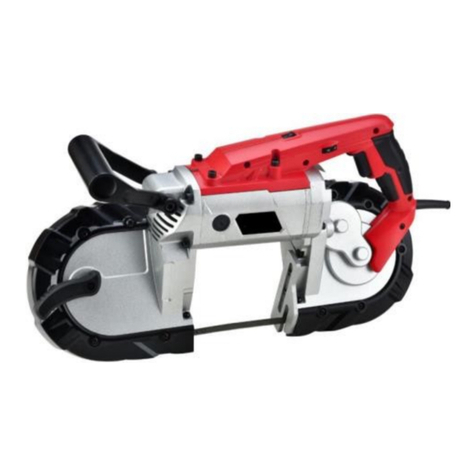© by WilTec Wildanger Technik GmbH Item 61123 Page 6
http://www.WilTec.de
http://www.aoyue.eu 06 2021-1
http://www.teichtip.de
•Use a rip fence or straight edge guide when cutting.
•Avoid cutting nails. Check the material to be cut to see if there are nails in it and remove them
before cutting.
•Do not run the saw while carrying it by your side.
•Make sure the depth lock lever is tight and secure before making a cut.
•Do not use damaged or dull blades. Misshapen or incorrectly adjusted blades create narrow
cuts that can lead to excessive friction, blade tilting or kickbacks, etc.
•Always use saw blades with holes of the correct size, never use defective or incorrect blades.
Kickback
Kickbacks are sudden reactions to a jammed, bound, or misaligned saw blade
that causes uncontrolled movement of the saw out of the
workpiece towards the user.
•If the blade is stuck in the cutting gap, the blade stalls and the motor can respond by driving
the device back towards the user.
•If the saw blade is twisted or misaligned in the cut, the teeth on the rear edge of the blade can
bind into the top of the wood, causing the saw blade to move out of the cutting gap or jump
back towards the user.
•The use of blunt blades or improperly secured workpiece increases a kickback probability.
•To avoid kickback, special care is required for wet wood, green wood, or pressure treated
wood during cutting.
Kickbacks are the result of improper use of the saw, incorrect operating
procedures or conditions and can be avoided by taking
appropriate precautionary measures
as described below.
•Hold the saw firmly and position your arm so that it can withstand kickback forces. Position
your body on either side of the blade, but not in line with it. Kickback can cause the saw to
bounce backwards, but it can be handled by the user if appropriate precautions are taken.
•When the blade is bound, or if a cut is interrupted for any reason, release the trigger and hold
the saw firmly but motionless in the material until the blade comes to a complete stop. Never
try to remove the saw from the workpiece or to pull the saw backwards while the saw blade is
moving, as this can cause kickback. Investigate and take corrective action to eliminate the
cause of the blade binding.
•When you start up a new saw in the workpiece, centre the saw blade in the cutting gap and
check whether the saw teeth are not binding in the material. If the saw blade is bound in the
workpiece, it may move upwards or kick back from the workpiece when the saw is restarted.
•Support bigger wood panels to minimize the risk of blade crushing and kickback. Bigger pan-
els tend to sag under their own weight. The support must be placed under the slab on both
sides, near the cutting line and near the edge of the slab.
•Do not use dull or damaged saw blades. Unpolished or improperly adjusted blades create a
narrow kerf that leads to excessive friction, blade binding and kickback.
•The locking levers for the depth and incline adjustment of the blades must be tightened firmly
and securely before a cut is made. If the blade setting shifts during cutting, it can result in
binding and kickback.
•Use extra caution when making a “plunge cut” into walls or other blind areas. The protruding
blade can cut objects that can cause kickback.
Safety instructions for saws
•Before each use, check that the lower blade guard closes properly. Do not operate the saw if
the lower guard does not move freely and close immediately. Never clamp or fasten the lower
safety guard in the open position. If the saw is accidentally dropped, the lower guard can
bend. Use the retractable handle to lift the lower guard and make sure that it moves freely and
does not touch the blade or other parts at all angles and cutting depths.
